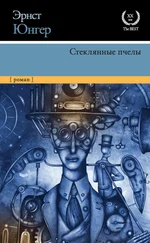Was in the city in the afternoon. The ruins are new and have been harder hit; the thrashing has been followed by the scorpion’s sting. The southern part of the city was burning. Coal cellars were aglow and roofs were collapsing in showers of sparks in the houses on Podbielskistrasse and on Alte Celler Heerstrasse, where I used to ride my bicycle. Nobody notices the fires anymore; they are just part of the scene. On the corners the homeless were packing up their salvaged possessions in bedsheets. I saw a woman come out the door of a house holding a chamber pot in her hand; little more than a fragment was still attached to its handle. Huge craters surrounded the railroad station, where the equestrian statue of King Ernst August still stood in front of the bare, empty halls. Two entrances of the great air-raid bunker where twenty-six thousand people had sought shelter, had been buried in debris. The ventilation system worked only sporadically, making the trapped crowd start to tear their clothes from their bodies and scream for air in the first stages of suffocation. God protect us from mousetraps of this sort.
Burned-out trains stood on the platforms; the pedestrian passage facing the Central Post Office had been hit by a dud that lay on the pavement.
My father-in-law’s apartment on Stephansplatz was the reason I had undertaken this mission, and I could see that it was still standing. The building’s air-raid shelter had withstood several direct hits without collapsing. Between the first and the second raid, men had left the shelter to visit their homes, and returned to their wives with the sentence, “The house is gone.”
KIRCHHORST, 7 JANUARY 1945
Tristitia [sadness]. Dreamed about Cellaris before awakening. I also think of him daily—what I would give if he could only glimpse the light of day again and be spiritually and physically free—if only his health has not been broken forever.
There is a lonely hut deep in the moor between Colshorn and Stelle. From it a soldier fires Christmas trees into the air during night raids in imitation of the target area markers used by the lead planes of the English squadrons. Yesterday Alexander called this a “lightning rod”—a superb comparison for a child.
Started reading the first volume of the History of Shipwrecks by Deperthes (Paris: Third Year of the Republic). First, his account of the winter spent by Barent and his crew in 1596–1597 on Novaya Zemlya. Fights with polar bears, which were truly threatening given the explorers’ very deficient guns. They conjure up images of encounters between humans and large prehistoric animals. There is a description of the toxicity of the polar bear’s liver; consumption of it is followed by almost lethal illness and a peeling of the skin. To counteract scurvy, people eat Cochlearia [scurvy grass]; it can even heal acute stages within two days. Another excellent cure is “low-growing prunelle” [blackthorn, sloeberries]. I assume that this is a variety of cloudberry.
KIRCHHORST, 8 JANUARY 1945
Read more about shipwrecks. Eight English sailors, whale fishermen who in 1630 became separated from their ship, the Salutation , were forced to spend the winter in Greenland. They set themselves up in a hut that had been used for boiling whale oil. Here they lived mainly on the cracklings left over in heaps where the blubber had been cooked down. They also caught foxes in traps constructed from whalebones. The sun disappeared on 14 October and was not visible again until 3 February. Their vessel returned on 28 May 1631.
This account comes from one of the eight sailors, a man named Pelham. When I read such names, I sometimes think of the wish that Friedrich Georg once expressed during one of our nocturnal conversations: He wished for an index to the catacombs in which could be found the name of every human being who had ever walked this earth, including a short description of his fate. Who knows whether or not something like this exists? When viewed as an absolute, however, it might be no more powerful than a sheet of hieroglyphics on which the temporal notations resemble each other and record a curriculum vitae of human beings. In the same way, the millions of books that have ever been written can be reduced to twenty-four letters.
We have heard that Langenhagen was destroyed in yesterday’s raid. Corpses from the village were thrown through the air as far away as the distant autobahn. A few bombs also hit nearby in the parish of Altwarmbüchen.
Still no letter from Ernstel.
KIRCHHORST, 9 JANUARY 1945
Anniversary of the death of my dear father, a date that I always commemorate.
Continued reading about shipwrecks. Winter encampment of the English captain Thomas James on Charlton Island in Hudson’s Bay. Scurvy causes the teeth to fall out and the gums to swell. In order to grow fresh vegetables, they plant peas in a covered space. Consuming melted snow causes illness, and so they dig a well that yields water, which they find to be “as mild and nourishing as milk.” They return after many fatalities and much privation. The description of such suffering had such a chilling effect on the English that they refrained from any further Arctic exploration for thirty years.
Then there is the Robinsonade about seven sailors who were put ashore by the Dutch Greenland Company on the island of Saint Mauritius on 26 August 1633 with their own permission so that they could observe the course of an Arctic winter. Scurvy soon sapped their strength, while they suffered under cold so severe that it froze the brandy in its casks, cracked the stones, and made the sea steam like a laundry room. They died one after another, keeping up their journal entries until 30 April 1634. On 4 July, the whaling fleet returned and found the corpses in their beds. One was holding the bread and cheese he had eaten shortly before he died; another had a prayer book in his hand and a box of salve to apply to his gums.
Concerning synchronicity. During these instances of solitary suffering, Wallenstein was murdered in Eger as the Thirty Years’ War played out in different parts of the planet. Such thoughts always touch me particularly deeply. They point to the sun’s great, all-seeing eye and to the great heart of the world.
KIRCHHORST, 10 JANUARY 1945
Raids in the evening with intense bombardment, after several vicious “dog stars” [36] E. J.’s word Hundssterne evokes Sirius in the constellation Canis Major, the brightest star visible in the night sky of the northern hemisphere and is thus an appropriate metaphor for aerial flares.
had been set off over the city. I stayed with Frau Schoor, whose bad influenza made it impossible for her to go to the air-raid shelter.
Read further about shipwrecks. Among other winter survival narratives, the one experienced by Bering is mentioned. His ship, the Saint Peter , foundered on 5 November 1741 on the coast of the Kamchatka Peninsula. Before the vessel was wrecked, the men were already suffering from scurvy. Many died when they were lifted out of the musty ship’s hold into the open air—it was too powerful, too debilitating for the faltering life force. Bering died as well and was buried on the island named for him. Among his officers was a doctor, a naturalist named Steller. Their food source was the abundant sea life along that coast, especially the sea cow (which has since become extinct) that was named for Steller. [37] Steller’s Sea Cow ( Hydrodamilas gigas ).
Two stranded whales were greeted with great joy; the men used the frozen cadavers as meat larders. Using their natural Russian talent for working with wood, they finished a new craft that was forty feet long on 10 August 1742. In this they were able to return to Siberia. Steller’s presence gives the expedition an intellectual, academic aspect, and puts the ever-recurring scenes of dazed suffering during this winter in a more illustrious light.
Читать дальше

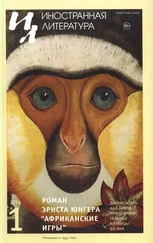

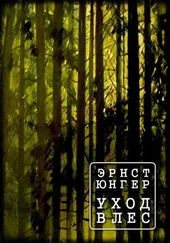

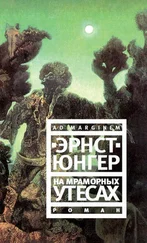

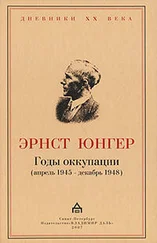
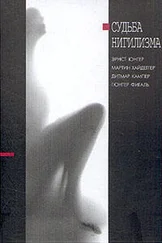
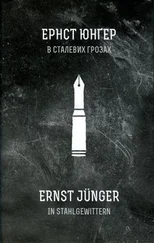
![Эрнст Юнгер - Стеклянные пчелы [litres]](/books/410842/ernst-yunger-steklyannye-pchely-litres-thumb.webp)
